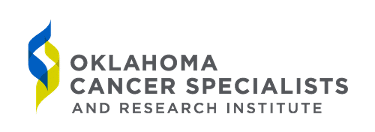Texas Oncology-Round Rock, located in Austin, Texas, is a key healthcare provider in the Southwestern US. The center features 65 infusion chairs and manages over 100 appointments per day using the Athena EHR system. Texas Oncology-Round Rock faced operational challenges due to increasing patient volumes and expected continued growth. In order to maintain its status as a critical healthcare provider in the community, the Texas Oncology-Round Rock leadership team committed to enhancing operational efficiency to better serve patients and support their nursing staff.
65 chairs
100 appointments per day
Athena EHR
Texas Oncology-Round Rock struggled with an imbalance in patient flow, characterized by extremely busy mornings and slow afternoons. This imbalance led to a shortage of infusion chairs during peak times, causing long wait times for patients and delays in pharmacy operations. Nurses were often unable to take lunch breaks due to unbalanced scheduling, and the process of conducting port draws in infusion chairs disrupted their workflow. Patients waited for lab results in the infusion chairs, which meant fewer available chairs for new patients, exacerbating the inefficiencies. Recognizing the need for a more sophisticated solution, the management team turned to LeanTaaS and iQueue for Infusion Centers in May 2022.
AI-Optimized Scheduling to Unlock Capacity
Upon adopting iQueue, LeanTaaS collaborated closely with Texas Oncology-Round Rock’s leadership, nursing staff, and scheduling team to create AI-driven scheduling templates tailored to the center’s unique needs. These templates effectively balanced patient flow throughout the day, leading to a 44% increase in daily appointment volume while ensuring nurses could take their lunch breaks without stress.
Improving Port Draw Process Efficiency
Further efficiency efforts focused on the port draw process, where LeanTaaS identified a bottleneck — and solution. Fast Track is a methodology that utilizes a dedicated physical and clinical resource to cohort shorter treatments in the infusion suite. This approach works best for appointments that tend to be relatively short in duration and low in acuity, such as port draws. By establishing a separate port draw Fast Track area, Texas Oncology-Round Rock increased both infusion and port draw capacity. This adjustment led to a 12% increase in combined volume and a 10% boost in nursing productivity.
Managing Nurse Staffing Capacity
To address fluctuating nurse staffing levels, iQueue provided a flexible solution that allowed for dynamic adjustments to scheduling templates based on available staff. This approach reduced scheduling stress and enhanced overall operational efficiency. Nurse productivity, which measures that average daily appointments per nurse, increased by 46%.









Take the first step towards unlocking capacity, generating ROI, and increasing patient access.
If you work in the healthcare industry, or even if you’re just an interested observer, you don’t need a book to tell you that the financial pressure is on as never before. A perfect storm of circumstances is swirling together, one that will make survivability, not to mention profitability, a greater challenge for healthcare companies than we’ve seen in the modern era.
As with banks, retailers, and airlines, which had to rapidly enhance their brick-and-mortar footprints with robust online business models—it is the early movers eager to gain new efficiencies that will thrive and gain market share. The slow-to-move and the inefficient will end up being consolidated into larger health systems seeking to expand their geographical footprints.
Let’s look at just a few of the looming challenges healthcare must meet head-on.
An aging population
By the year 2030, the number of adults sixty-five years of age or older will exceed the number of children eighteen years or younger in the United States. We are living longer than our parents did. Positive news for sure, but problematic for several reasons.
The older we get, the more medical help we need. Older people have more chronic diseases. By 2025, nearly 50 percent of the population will suffer from one or more chronic diseases that will require ongoing medical intervention. This combination of an aging population and an increase in chronic diseases will create a ballooning demand for healthcare services.